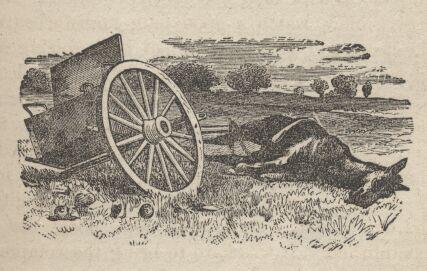About 20 miles east of Fallon on US 50 an unimproved road leads to Sand Mountain and Sand Springs Pony Express Station. The station has a number of interpretive signs. In March of’ 1860 Bolivar Roberts, J.G. Kelley and others built the station. James McNaughton was station keeper for a while before he became a rider.
The striking sand dune known as Sand Mountain is highly visible from a distance. The mountain of clean, white sand is a single dune 500′ high and 1½ miles long surrounded by lesser dunes. The mountain is formed as sand blown by the prevailing SW wind is dropped at the end of the valley, where the terrain forces the wind upward. The dunes began forming about 4000 years ago after the vast, ancient Lake Lahonton receded from the valleys of the Truckee, Carson and Walker Rivers.
Several sources identify Sand Springs as a station, including the 1861 mail contract. Like Cold Springs, this station existed due to the construction efforts of Bolivar Roberts, J. G. Kelly, and their crew in March of 1860 for the C.O.C. & P.P. Express Co. [40] James McNaughton managed station operations for a time. On October 17, 1860, Richard Burton recorded his negative views of the roofless, dirty structure and its staff, stating that it was "roofless and chairless, filthy and squalid, with a smoky fire in one corner, and a table in the centre of an impure floor, the walls open to every wind, and the interior full of dust." Travelers found a reliable source of water at Sand Springs, but its poor quality often poisoned animals and probably made people ill.
In addition to the Pony Express, other individuals and businesses utilized Sand Springs until World War Two. The telegraph came through the area, and the site served as a freight, milling, and ranching center. Structural ruins from many of these activities still exist around the springs. In 1976, the site was determined eligible for the National Register. By 1981, the station was listed on the National Register of Historic Places and was structurally stabilized. This source locates the station's ruins near Sand Mountain, about three-fourths of a mile north of Highway 50.
To Carson Lake, 17th October.
Sand Springs Station deserved its name. Like the Brazas de San Diego and other mauvaises terres near the Rio Grande, the land is cumbered here and there with drifted ridges of the finest sand, sometimes 200 feet high and shifting before every gale. Behind the house stood a mound shaped like the contents of an hour glass, drifted up by the stormy SE gale in esplanade shape and falling steep to northward or against the wind. The water near this vile hole was thick and stale with sulphury salts: it blistered even the hands. The station house was no unfit object in such a scene, roofless and chairless, filthy and squalid, with a smoky fire in one corner, and a table in the centre of an impure floor, the walls open to every wind, and the interior full of dust. Hibernia, herself, never produced aught more characteristic. Of the employes, all loitered and sauntered about desoeuvres as cretins, except one, who lay on the ground crippled and apparently dying by the fall of a horse upon his breast bone.
(The City of the Saints, p 491)
